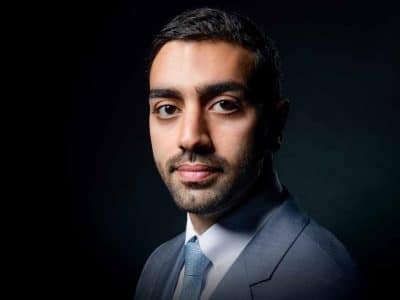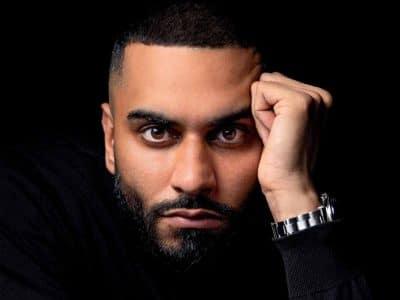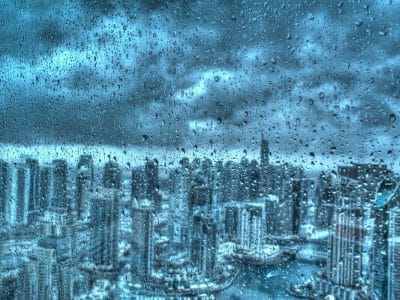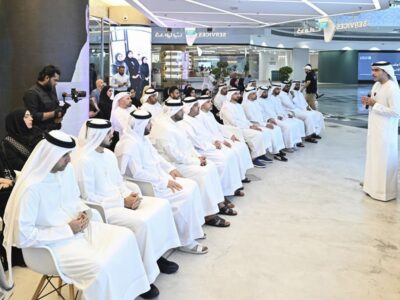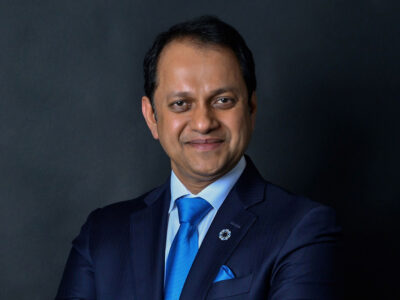HME KCA has designed some of Dubai’s most prolific landmarks: can you talk us through them?
What people have seen KCA do in Dubai, while quite diverse in itself, is not the whole story of KCA.
I designed Jumeirah Beach Hotel first, followed by the Burj al Arab, then the Madinat Jumeirah, which covers the entire spectrum from the very contemporary to the classical.
People tend to overlook this and just focus on my work at the Burj Al Arab and assume that is all we can do.
What people need to remember is that I designed the Burj Al Arab over ten years ago, and whatever people may say about it — hopefully it gets more good responses than bad — there is no such thing as bad publicity!
It is better to be talked about than not at all.
It’s so different to anything you see in the world, let alone Dubai, which makes it difficult for other people to compete with.
It was a very special project and will remain so for probably the rest of my career. HME Why do you think KCA was chosen for the Burj Al Arab?
Purely on merit.
There were two international competitions, one was for the Burj Al Arab (the other was for Jumeirah Beach Hotel earlier on) and KCA was appointed after winning both.
Another reason is that I think I was very blessed.
I was in the right place at the right time.
But don’t forget, you have to also work really hard… Like many things in life, interior design is about 10% inspiration and 90% perspiration. HME The Burj Al Arab has attracted both praise and criticism, how do you feel about it?
It’s definitely a project that will be difficult to surpass in reputation, budget and the iconic status that it has.
It is a great feeling that ten years after the initial designs, it’s still being talked about.
I was quite young when I was working on this project, and I don’t think I fully comprehended what history we were creating at the time.
I mean, yes, I was over-awed, mainly by the huge budget I could play with and what I could do with it, but not in terms of the global media and public attention it would command. HME It has been criticised as being overly colourful and adventurous: what would you say to that?
HH Sheikh Mohammed once said, “The biggest risk in life is not to take any risks.” I had this in mind when designing the interior.
For such an iconic building, the worst thing we could have done was to play it safe.
You may only get one chance in your lifetime to be part of something that big and it deserved to be a talking point on the inside as well as the outside.
I don’t know anyone that has been rude to my face, but I know of quite a few that have been rude behind my back!
But I’m indifferent.
I put it down to jealousy.
I never say that I am the best at what I do. As far as the criticism goes, well it hasn’t stopped us winning the next project, let’s put it that way. HME What do you feel about the notoriety that this one project has received though?
It is a double-edged sword — a lot of people who don’t know other projects we have completed, think that this is all we can do, this explosion of colour.
They think that is our house style.
Not at all, this is not our house style.
It is perhaps a facet of one of our many styles.
It shows you one of the things we can do. HME If you were asked to redesign the Burj Al Arab, or refurbish it, what would you do?
As a designer there are 200 ways that you could redesign the Burj, if I were to redesign it tomorrow all 200 ways would be as equally exciting.
I seldom lack inspiration, ideas or creativity.
If I did have that problem I’d close shop immediately.
The important thing is to be comfortable with what you believe in and to be convinced in your design before you convince your client. HME After being so busy in Dubai up to 7-10 years ago, there has been a gap in your projects here and now you’re involved in some massive projects again, why?
We have not actually stopped working here in Dubai.
After the opening of Burj Al Arab, we were appointed on Madinat Jumeirah, which involved us in nearly 90% of the project and also the new airport extension of Terminal 3, and Concourses 2 and 3.
We are currently very busy working on seven other projects in Dubai.
However, you can see how amazing this place is in its progress in construction.
The emirate has progressed at such a speed it’s hard to keep up, and simply you cannot do all these projects!
We are also conscious not to lose our attention in projects in other parts of the world.
There’s a saying it’s fun to have fun but it’s greater fun to work and we certainly have a lot of fun with our work — we’re working in 11 countries at the moment, so we are truly international.
London is my headquarters, but Dubai is a separate office, which has grown incredibly and is now equal in numbers to London. HME What are you working on in Dubai at the moment?
We have a lot of projects ongoing in Dubai: The Jumeirah Al Khor Hotel in Healthcare City; the extension at Dubai Airport — Concourses 2, 3 and Terminal 3; Dubai Metro; a zen-inspired extension to Jumeirah Beach Club, and Executive Towers.
We also have a new project in Jordan, which is a bit like Madinat Jumeirah — it will have five hotels, apartments, townhouses and villas. HME And what about outside of the Middle East?
Outside of Dubai our work is quite diversified. W
e are doing a few projects in the Far East, which includes a very chic hotel in downtown Beijing, a very contemporary tower office and hotel in Hong Kong, a rather glamorous casino in Macau and a quite exclusive residential block in Mid Levels in Hong Kong.
Some 60-70% of our projects are in the hospitality sector, but we are actually doing other types of projects that I think make us better designers.
As much as I love doing hotels, our exposure to other projects gives us a very broad spectrum.
Quite a percentage of our work is unpublishable — work for royalty for instance.
In London we are the interior design consultants for the highly publicised Pan Peninsula, which has got to be the most exclusive residential condominium in Canary Wharf.
We are also currently designing the Terminal 5 hotel in Heathrow, which will be a Sofitel.
And we are about to complete the first phase of the refurbishment of the InterContinental in Hyde Park Corner, London where we are responsible for the all the suites. HME How much practical design do you still do yourself?
I personally get very involved in the conceptual stages of almost each and every project.
Of course I work very closely with all my associates and managers who manage and take it over from there, but I do try to remain in touch with and oversee most of the projects.
I have a very special team — my most senior designers have been with me for quite a long period of time (over 10 years).
We are a design led company first and foremost, and a business second.
HME What is KCA’s approach to design?
I think the worst thing about design is when people play it safe.
I live on the edge.
If I want to produce something safe I would give it to one of my junior staff, but even then I would say that people who work for KCA are not people who play it safe.
They wouldn’t do something ordinary anyway.
Clients come to us because they know we push the boundaries and think a lot before we put pen to paper.
We are not cookie cutters either.
And we don’t think it’s very difficult to do beige on beige. HME Is there one thing that binds all your projects together in the absence of a house style?
I think we’re quite a brave bunch. Some people have told us they can now recognise the style and go somewhere and say ‘that’s a Khuan Chew’, which is very flattering, but a lot of the time it isn’t a Khuan Chew but I say ‘thanks, I would have liked to have done that one!’ HME Your projects are actually very wide-ranging, do you have a very varied mix of designers in your company?
We are truly international in this sense.
We have designers from all parts of the world.
In my London office we have Dutch, Chinese, Malaysian, Japanese, British, Polish, Tunisian, Indian, South African, German and American designers.
It is very interesting because you do get a great dialogue going, a great exchange of ideas.
In the Dubai office we have designers from all around the Middle East and further east and people assume that means that someone from Egypt designs the same as someone from Jordan or Lebanon but that is not true, they each have their own influences.
It’s like saying that all Europeans design in the same way.
They simply do not. HME Where do you get your inspiration from?
It depends on the criteria, the client’s mission, where it is, what the project is about, and nine out of ten times we are creating a business for a client and it’s a big responsibility.
You need to assess what he is selling, and to whom? What is that little extra that makes it stand above everything else in the same market?
For instance, we are designing a casino at the moment in Macau, and there are 20 casinos coming out at the same time, so how is ours going to be special?
With each job we have to look at it to see how we can always get the best result for our client.
If you are in the shoes of your client, it makes the design process much easier.
We need to be responsible as designers at the end of the day.
You can’t convince your client if you’re not convinced yourself. HME How do you develop a good relationship with your clients?
Being a designer, it’s almost as though you are in partnership with your client.
You need to trust him and he needs to trust you.
If you don’t have that trust then you can be assured it will be a failure.
There will sometimes be instances when you need to persuade a client to go in a certain direction or to dissuade them.
And this can only happen if a large amount of trust is going back and forth. HME Where was the last place that you thought ‘wow, I wish I was involved in that!’
I do love architecture in general and am always in awe of the creations of some high profile architects like Frank Gehry, and Tadao Ando whose architectures are completely poles apart but I love both styles.
But I think I would have loved to be involved in the creation of some monuments of the ancient and near past because I think they have lasted the test of time and still today, whenever I am there, I am simply blown away.
These are the places that have influenced, inspired and moulded my career in design.
Some of these places are the Great Wall of China, Angkor Wat, Devi Gargh and the Pyramids in Egypt.
